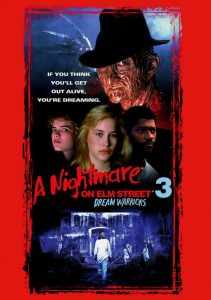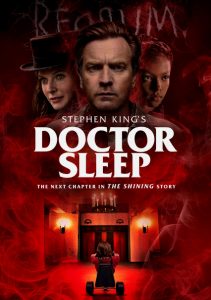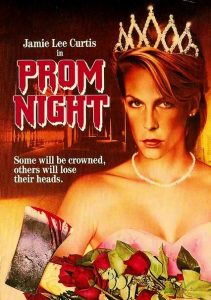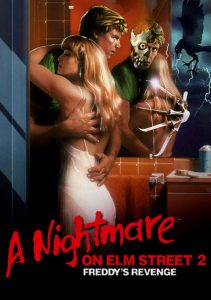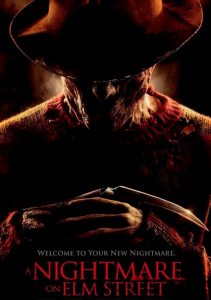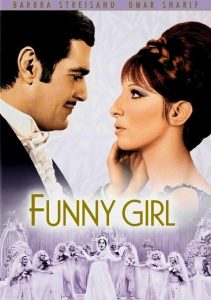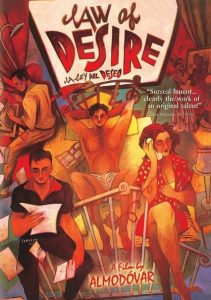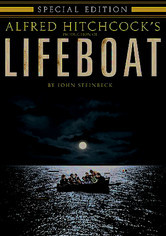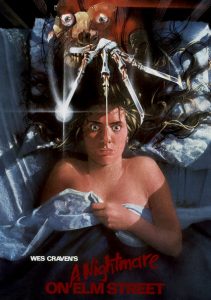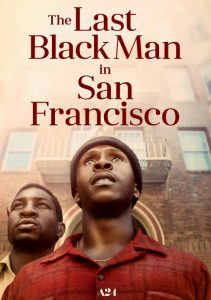A Nightmare on Elm Street 3: Dream Warriors-1987
Director Chuck Russell
Starring Patricia Arquette, Heather Langenkamp, Robert Englund
Scott’s Review #1,028
Reviewed May 29, 2020
Grade: B+
A Nightmare on Elm Street 3: Dream Warriors (1987) is a credible effort to take the, at this point, tired slasher genre in a new direction, using style and special effects to its advantage.
The film is not a work of art and does not stray too far from the norm to risk losing the target audience, but the experiment works, providing the film with a fresh feel.
Thankfully, Freddy Krueger (Robert Englund) is in tow providing wit and humor and rich character history rarely seen in horror.
One year following the events of the previous chapter, Kristen Parker (Patricia Arquette) awakens following a nightmare of being chased by Freddy Krueger, to find him in her bathroom where she is attacked again.
Her mother believes that she is suicidal and sends her to Westin Hills Psychiatric Hospital, where Kristen is placed under the care of Dr. Neil Gordon (Craig Wasson).
The rest of the events of the film mainly take place in this setting. A new intern therapist, Nancy, (Heather Langenkamp) takes an interest in Kristen’s case.
In two clever plot twists, one a bit too coincidental, Nancy reveals to the remaining patients that they are the “last of the Elm Street kids”, the surviving children of the people who banded together and burned Krueger to death many years ago.
The second is more intriguing as a nun named Sister Mary Helena (Nan Martin) provides the history of Freddy’s mother, Amanda Krueger, who turns out to be the same.
This humanizes Freddy a bit and provides layers to his story rather than just another “slice ’em and dice ’em” horror film.
The film has a way of gathering curiosity and delivering the goods with dreams hypnosis and mental synapses, as the kids realize they have dream powers that culminate in a group adventure.
Perfect for the mental hospital setting.
The junkyard sequence that provides the climax with so much muscle is splendid adding creative and colorful bits of junk, littering the entire set with rusty tin trinkets and other nooks and crannies to marvel at.
A feast for the eyes and a perfect backdrop for evil and killings. The set design works tremendously well in this film.
The familiar character Nancy played once again by Langenkamp (the main girl from the first Nightmare) is a nice touch of recognition that will please fans immensely. A returning favorite in a horror franchise is always a smart move.
The casting of esteemed character actress Nan Martin, who can frighten the pants off anyone if given a good part, is a divine decision. The actress even resembles legendary actress Betsy Palmer (familiar to Friday the 13th fans as the dreadful Mrs. Voorhees).
The creepy mommy theme so often works well in horror films and this inclusion is no exception.
The theme song to A Nightmare on Elm Street 3: Dream Warriors is a pop-metal treat written and performed by the heavy metal band Dokken.
This inclusion assuredly brought the teenage girls and the mullet crowd alike to movie theaters across America. The song is catchy and can easily be head-banged as the end credits roll across the screen.
Even more impressive is that the lyrics make sense from a story perspective since dreams are a huge part of the franchise and this specific installment.
Nearly rivaling the original A Nightmare on Elm Street (1984) in originality and plot, A Nightmare on Elm Street 3: Dream Warrior (1987) does a fantastic job bringing energy to a fading genre, one not to be rejuvenated for another nine years when Scream (1996) debuted.
Engaging and brightly lit razzle-dazzle visual sets within dreams are pulse-racing and creative, while a mother story crafts fresh air. This film is the sequel high-point to a series of duds soon to follow.
